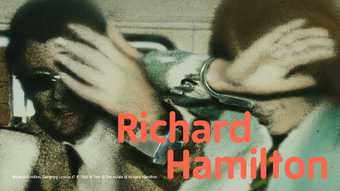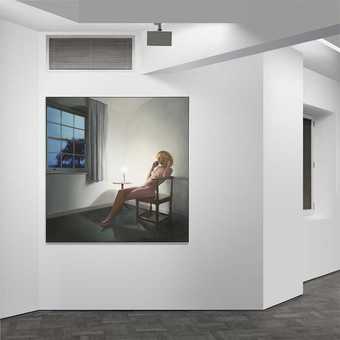Tate Modern
13 February – 26 May 2014
Open daily from 10.00–18.00 and until 22.00 on Friday and Saturday
One of the most influential British artists of the 20th century, Richard Hamilton (1922–2011) is widely regarded as a founding figure of pop art, who continued to experiment and innovate over a career of 60 years. Tate Modern presents the first retrospective to encompass the full scope of Hamilton’s work, from his early exhibition designs of the 1950s to his final paintings of 2011. This new exhibition explores his relationship to design, painting, photography and television, as well his engagement and collaborations with other artists.
Hamilton is best known for his pivotal role in the birth of pop art, including the groundbreaking installation Fun House 1956. A centrepiece of the exhibition, this immersive room combines images from movie-posters, magazines and art history, and is shown alongside a print of the era-defining Just what is it that makes today’s homes so different, so appealing?. The depiction of Mick Jagger in the iconic Swingeing London 67 1968–9, as well as images of other celebrities such as Bing Crosby and Marilyn Monroe, show Hamilton’s continued interest in popular culture, but he also addressed wider contemporary issues and political subjects. These included the Kent State shootings and the IRA ‘dirty protests’, as well as figures like Margaret Thatcher and Tony Blair in such works as Treatment Room 1984 and Shock and Awe 2010. Hamilton’s interest in interiors, architecture and design will also be represented by his depictions of everything from the Guggenheim Museum in New York to a classic Braun toaster.
This is the first Hamilton retrospective to fully reflect the importance of his exhibition designs and installations. The exhibition will include key examples of this practice, including a recreation of his very first installation Growth and Form 1951, and Lobby 1985–7, in which a painting of a hotel lobby in echoed by a column and staircase in the gallery room itself. In collaboration with Tate, two of Hamilton’s other installations, Man, Machine and Motion 1955 and An Exhibit 1957, are being shown at the ICA to coincide with this retrospective. Almost six decades after the artist presented these works at the Institute’s original location in Dover Street, they will be restaged to reflect the artist’s close relationship with the ICA throughout his career.
Hamilton was also notable for his many collaborations with other artists, from making the official reconstruction of Duchamp’s The Bride Stripped Bare by her Bachelors Even (The Large Glass) to a life-long series of Polaroid portraits which Hamilton invited other artists to take of him, including Francis Bacon, Andy Warhol and Roy Lichtenstein. This interest in the work of others can also be seen in his very final computer-aided paintings, which were inspired by the Italian Renaissance masters.
Richard Hamilton was born in Londonin 1922. He studied at the Royal Academy Schools and Slade School of Art, and went on to teach at the London Central School of Arts and Crafts and the University of Newcastle upon Tyne. Hamilton was also a key member of the Independent Group, who met at the ICA in the 1950s. He represented Britain in the 1993 Venice Biennale and his work is held in major public and private collections around the world.
Richard Hamilton is curated at Tate Modern by Mark Godfrey, Curator of International Art, with Hannah Dewar, Assistant Curator. It will be accompanied by a fully illustrated catalogue and a programme of talks and events in the gallery. The exhibition was initiated by Vicente Todolí and Paul Schimmel and organised by the Museo Nacional Centro de ArteReina Sofía, Madrid in collaboration with Tate Modern. It will be touring to Madrid from June to October 2014.


